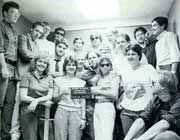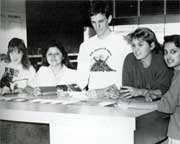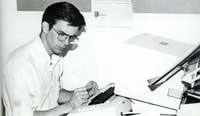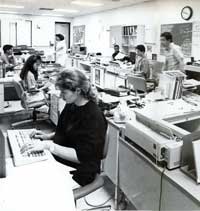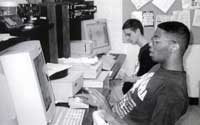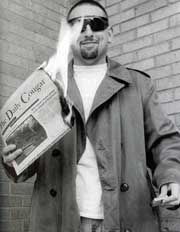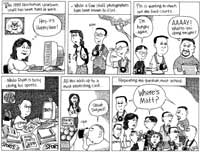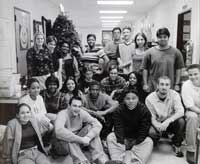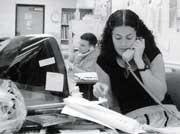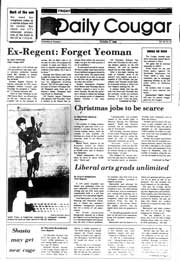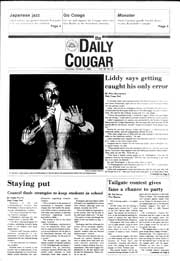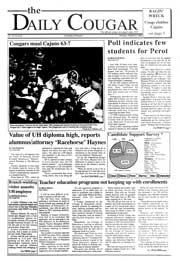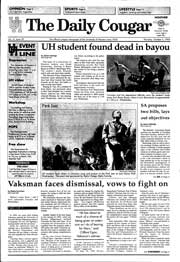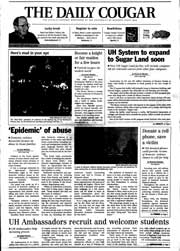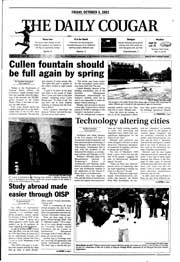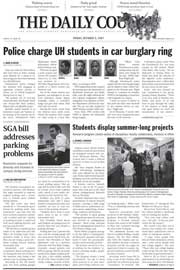1985–2009
A flood of technological change; then Allison
Newfangled machines aside, the staff continued to rack up scholastic journalism awards and never lost its touch as an aggressive watchdog for the campus. Editors never missed an occasion to pillory the administration, especially in the 1980s when UH's endowment took a hit during the recession and when the University decided to spend $800,000 to build obelisks at Cullen Boulevard and Interstate 45.
E-mail addresses, one of the early signs of the Internet age, began appearing in the pages of the Cougar and alongside the staff box in 1996. The Cougar had been publishing some articles in electronic format since 1991, but The Daily Cougar Electronic Edition did not officially debut until 1998.
A staple of The Cougar in the 1990s and early 2000s was "Coogie," a comic strip by John Palamidy, a UH Physical Plant employee by morning and cartoonist by afternoon. Coogie was the longest-running locally produced cartoon strip in UH history.
Christening itself "the official student newspaper of the new millennium," The Daily Cougar greeted the year 2000 with enthusiasm.
Enjoying a healthy base of advertising, thanks largely to the dot-com boom, the paper underwent considerable growth leading up to the new century. Papers averaged higher page counts and included more color than ever before.
Advanced desktop publishing software and hardware made it possible for Cougar editors to cheaply and easily redesign the newspaper. Over the last decade, each editor in chief has had the opportunity to mold the paper's design to match their vision for the paper.
One of the biggest challenges of the new century was surviving the flood after Tropical Storm Allison. Floodwaters soaked the entire Cougar office, rendering it mostly unusable. The campus closed for recovery and the paper began picking up the pieces in its swamped office. When summer school resumed, the Cougar was ready. Operating with a skeleton staff of editors and reporters huddled in the business office, and salespeople working from home, the Cougar told the story of the university's reaction to the natural disaster.
As the campus recovered a sense of normalcy, it sustained a far worse blow on Sept. 11, 2001. The paper's response was tempered and sensitive, admonishing students who might attack or criticize Muslims because of the attacks. Several Muslim students, fearing for their safety, were escorted off campus by UHPD.
"This is not a time to jump to conclusions and blame innocent people. This is a time to come together to mourn the nation's losses," the Editorial Board wrote on Sept. 12, 2001.
Two years later, the paper was witness to another tragedy when space shuttle Columbia broke apart over Texas in February 2003.
In each event, the Cougar could not rely on national wire services to fill its pages. Instead, student reporters and photographers told the stories, often finding a unique UH connection or perspective.
